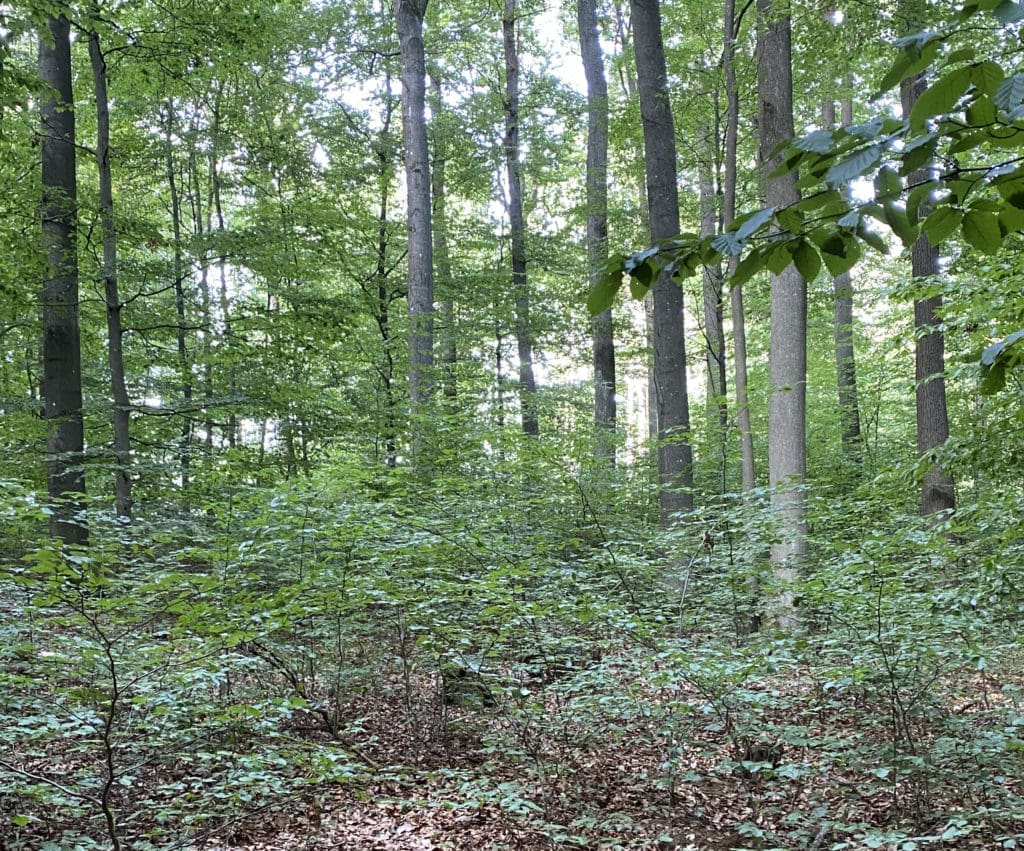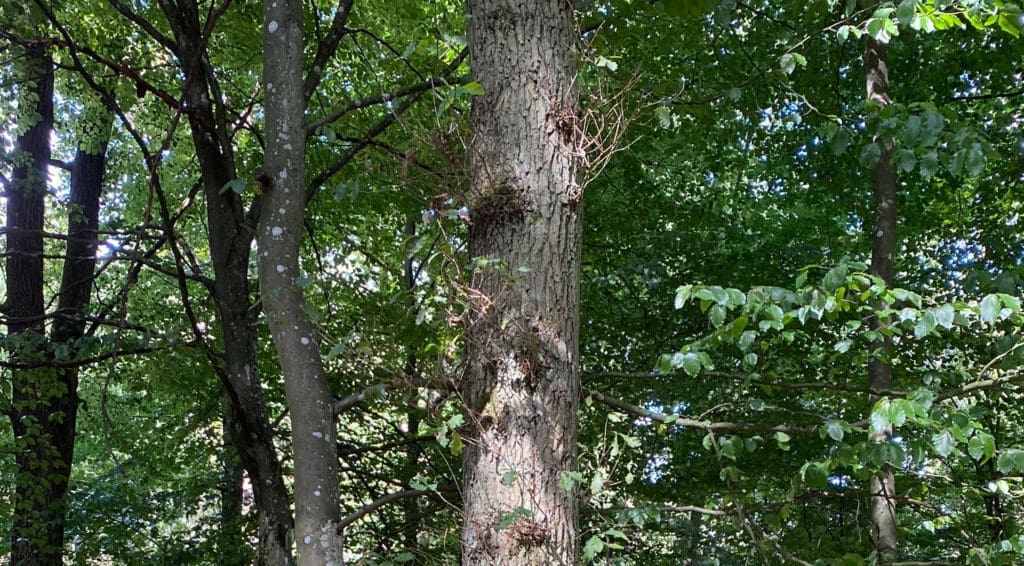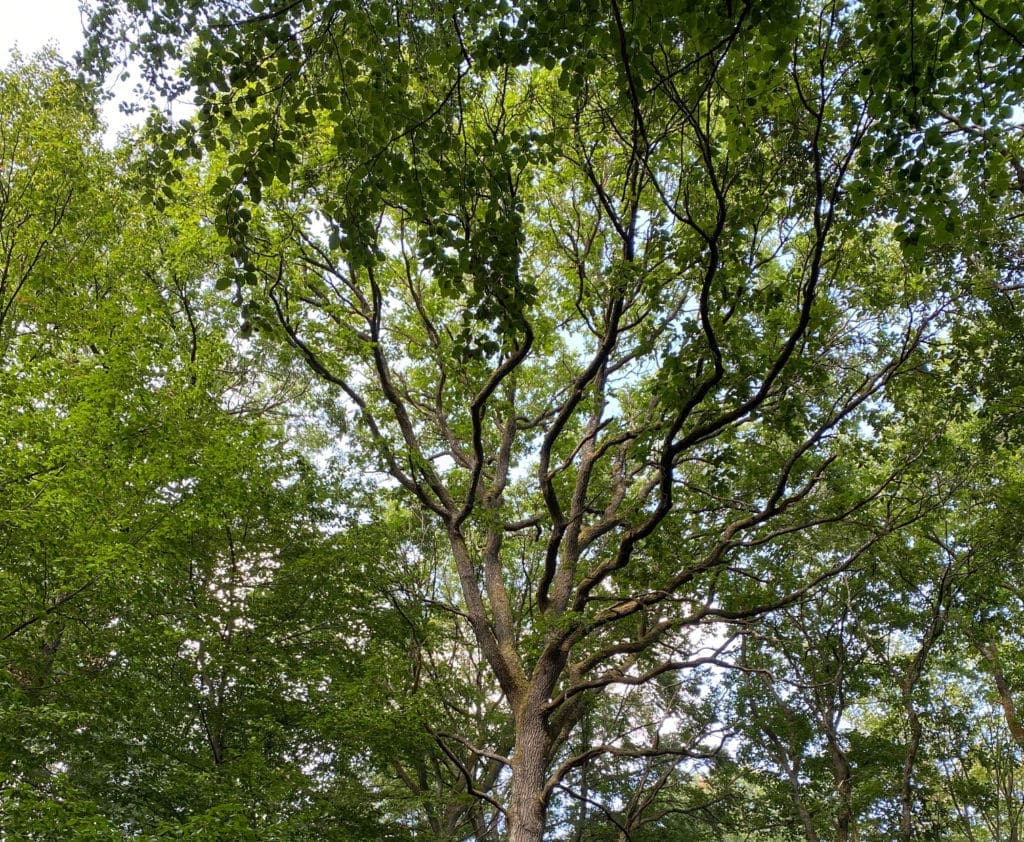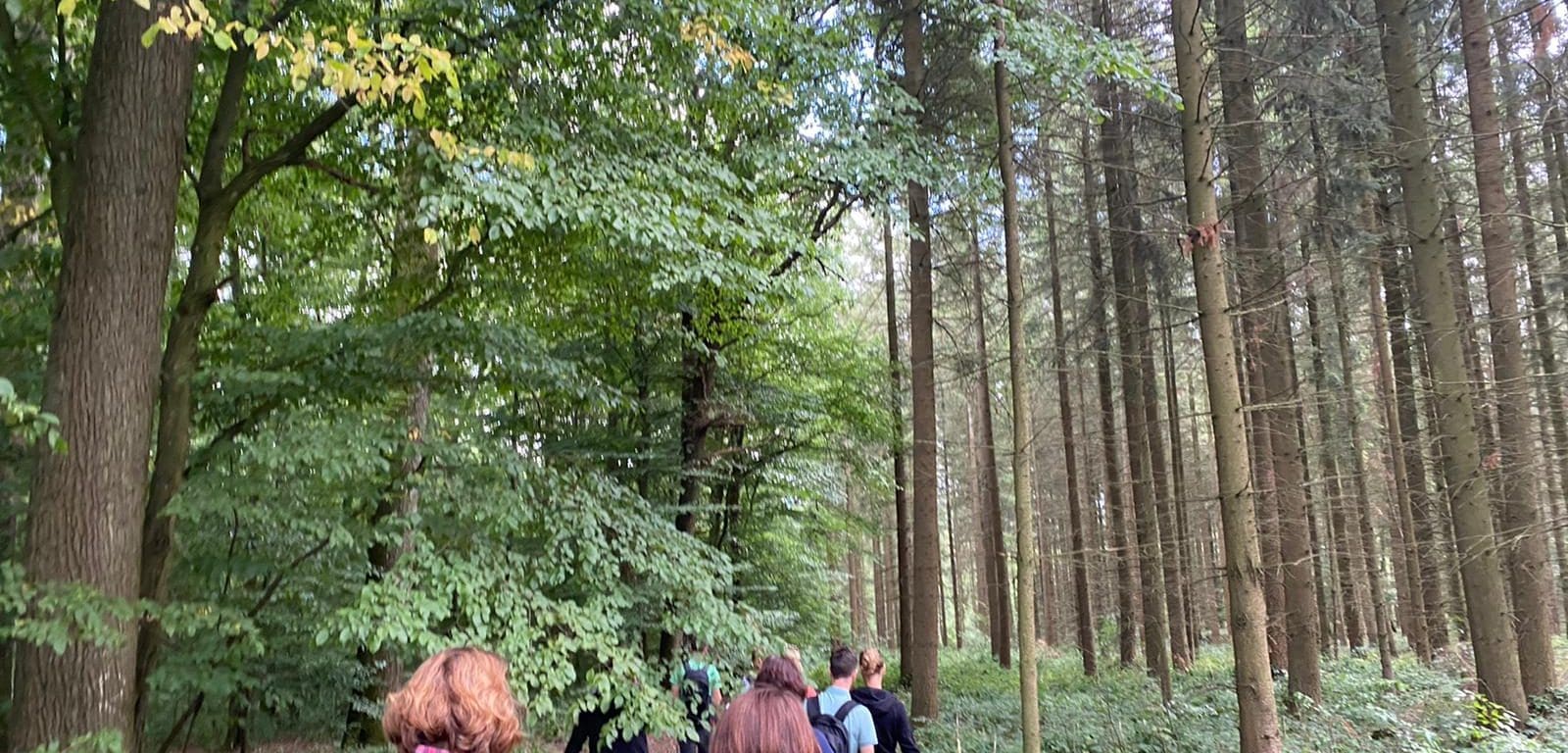I was recently introduced to the book, The Hidden Life of Trees, by a friend. Recommending it, Bijoy said, “The author talks about this forest, somewhere close to you.”
“Close to me?” I had to Google it. Lo and behold! The book is based on the beech forests in the Eifel area of Germany, where I live. This was a forested area that I was planning on visiting for some years.
Reading about the forest, the book’s author Peter Wohlleben, and how the forester started his journey of understanding trees, was really interesting. It was a relatable story of how so many things work in Germany — something absolutely fascinating and remarkable being done in a completely nondescript little town. Almost immediately, I wrote to the contact person listed on the official website, asking if I could visit and hoping I could meet the author.

To the woods in Wershof
The timing was perfect: I had just started reading the book and there were no faraway vacations planned owing to the pandemic. Wohllebens Waldakademie in Wershof, Germany had two free slots for their first and last (bookable for 2020) tour in English. I obviously couldn’t meet the author. He’s a popular and busy person now, but his academy does some really interesting things.
Just two and a half hours’ drive from home, I was ready to walk into the fabulous beech forests I had read about in the book. That I had just completed about 10-odd pages had stoked enough curiosity and fascination for this exploration.
The tour guide led us to the forest through the tiny village of Wershof.
First stop: We paused under a Linden (lime) tree. Like most things in nature, we learned that what you see is always the tip of the iceberg. In the context of trees, the roots span twice as much as the crown that we see. So each time we admire a tree, its circumference is actually two times of it as a whole.
I was instantly reminded of the beautiful trees of Bangalore — their crowns reaching out across the other side of the road — and tried to imagine how large they would be as a whole.

Older than Methuselah
As we walked along we came across an Aspen. It was fascinating to learn that Aspens grow out from within one seedling or one tree — called clonal groves. We saw many smaller ones growing beside the tree we were looking at.
Our guide told us about the Pando in Utah, USA. I was absolutely amazed to hear that the Pando, a clonal colony arising from one male Quaking Aspen (Populus tremuloides) occupying over 108 acres, was estimated to be 80,000 years old.
A tree that old!
As children, we were taught how to tell a tree’s age by looking at the rings on the sawn-off trunk. Unfortunately, to do this, the tree must be felled.
Estimating the age of a tree as it stands is quite hard — as we learned about Pando.

Kids ahead, grow slow!
As we walked into the forest, we reached a section that our guide called the Kindergarten. Here was a whole bunch of small, young Beeches.
Beech parents do not let their children grow up too soon. Apparently, they believe the slower they grow, the longer they will live. (Humm… Indian parents want to think that too right? :-P)
The parent trees spread their branches so wide that there’s very little sunlight reaching the ground for the children, slowing their growing speed. Only occasionally when a parent tree breaks down or dies suddenly do the young ones get so much sunlight that they all rush towards the light and grow rapidly.
Our guide taught us how to look at the child plants and estimate the age by counting the nodules in each branch, each nodule marking a year. Clearly, even the smaller ones were many years old, according to our timescale.
It’s in this spot that we could also touch the neural network of the forest — the fungi network. It wasn’t just the slightly visible ones. Clear the leaves a bit and there’s a whole carpet of thin, almost invisible fungi that are in fact more critical to the forest than individual trees.
They are the ‘brains’ of the forest.

Useful in life and in death
As we walked further into the forest, we came across evidence of human intervention — planting of non-native species amidst the wilderness. This forest had some non-native Spruces among them, mainly planted for timber. They didn’t belong among the Beech. Obviously, when there’s timber, there are heavy machines coming in.
But not here in Wershof. In this forest, they are careful not to crush the minute organisms in the ground with heavy machines. So, every time they pull down a tree, they do so with the help of horses. It’s gentler on the ground, and the forest.
In fact they also do not remove the old, dead trees as they are still alive with organisms within, which can support the trees beside them.

Spooked!
The most memorable tree for me was the one in “panic mode.” I always believed that plants had feelings but I never fathomed a way they could so visibly express it.
The big Oak tree in the picture was in panic mode — the many thin offshoots from the trunk represent panic because the Beech tree to the left is consuming all the sunlight. In desperation, the Oak is growing shoots from everywhere in an attempt to get sunlight from wherever it can, in order to survive.
When comparing an Oak with a Beech, apparently the Beeches are way smarter in consuming sunlight. So this panic-stricken Oak isn’t going to survive too long 🙁
On the other hand, other (smarter) Oak trees among the Beech trees had a different strategy.
This Oak decided to grow tall and then open up all its branches in a funnel shape to get all that sunlight.
Smart.

Trees, like humans, are social in nature. They thrive when they are in good company. Trees, like humans, have emotions, they have parenting methods, they provide, and they are resilient.
Two hours of walking in the forest and understanding their life left me feeling a human connection with them. Yet, trees are different from humans in so many ways. They have so much goodness in them.
Standing in the middle of that beautiful forest, I felt ashamed of being a human (again).
All photos by Satya Viswanathan
ALSO READ
Fall Fable – Celebrating the en-masse death of leaves


LOVED it Satya! Very interesting. I want now to learn more about how trees communicate! And beautiful writing. thanks for sharing!